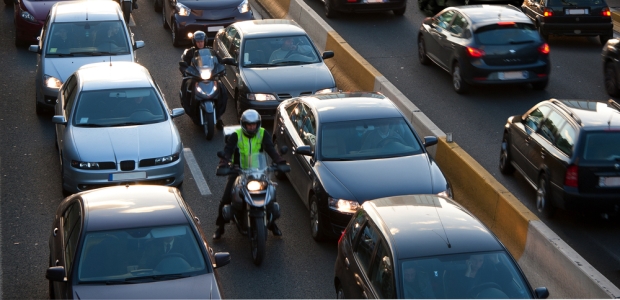
NTSB Wants Antilock Brakes on All New Motorcycles for U.S. Road Use
The safety board also recommended that NHTSA study how alcohol and other drug use contributes to motorcycle crash risk factors, compared with that of passenger vehicle drivers.
A report released this week from the National Transportation Safety Board recommends that the National Highway Traffic Safety Administration require antilock braking technology on all new motorcycles manufactured for on-road use in the United States. The report also recommends that NHTSA conduct or sponsor research to evaluate the effectiveness of stability control systems for motorcycles.
Titled "Select Risk Factors Associated with Causes of Motorcycle Crashes," NTSB Safety Report 18/01 is based on NTSB's analysis of crashes involving motorcycles with engine displacement of more than 50 cubic centimeters or a maximum design speed of 31 mph or more, with at least one reported injury sustained by either the motorcycle rider or passenger. The data came from the Federal Highway Administration's 2016 Motorcycle Crash Causation Study.
According to the most recent data available from NHTSA, in 2016 there were 5,286 motorcyclists killed in accidents, which represented a 5.1 percent increase from the 5,029 motorcyclist deaths nationwide in 2015. Per vehicle mile traveled, 2016 motorcyclist fatalities occurred nearly 28 times more frequently than passenger car occupant fatalities in traffic crashes, NHTSA reported in February 2018. That report also said in 2016, motorcycle riders involved in fatal crashes "were found to have the highest percentage of alcohol-impaired drivers than any other vehicle types -- 25% for motorcycles versus 21% for passenger cars, 20% for light trucks, and 2% for large trucks.
"The recommendations made in this report are designed to improve detection of motorcycles in traffic and give motorcycle riders more time to react to dangerous conditions," said NTSB Chairman Robert Sumwalt. "Passenger-vehicle based crash warning and prevention systems and connected vehicle technologies have the potential to enhance motorcycle safety by improving motorcycle conspicuity, but these systems are not consistently designed to detect or integrate motorcycles. Antilock braking and stability control systems on motorcycles provide riders with assistance in unexpected circumstances – riders remain in control until they need the help."
The NTSB report contains eight recommendations for NHTSA, one for the Federal Highway Administration, and one to the American Motorcyclist Association and the Motorcycle Safety Foundation. An abstract of the report that contains NTSB's findings and recommendations is available, but the full report has not yet been posted by the agency.